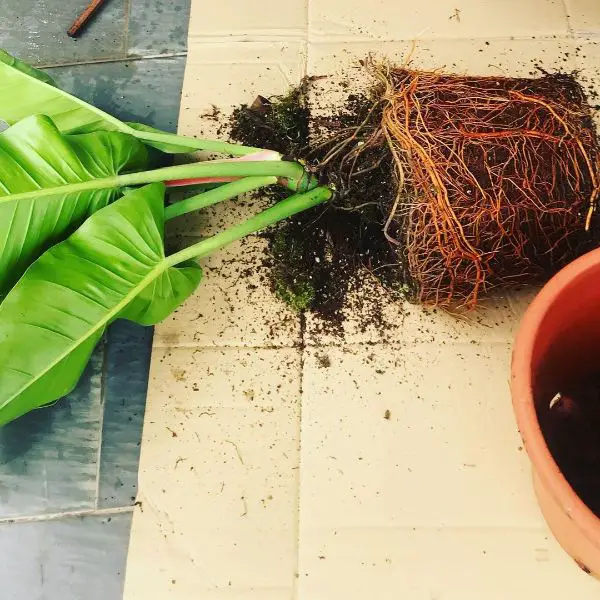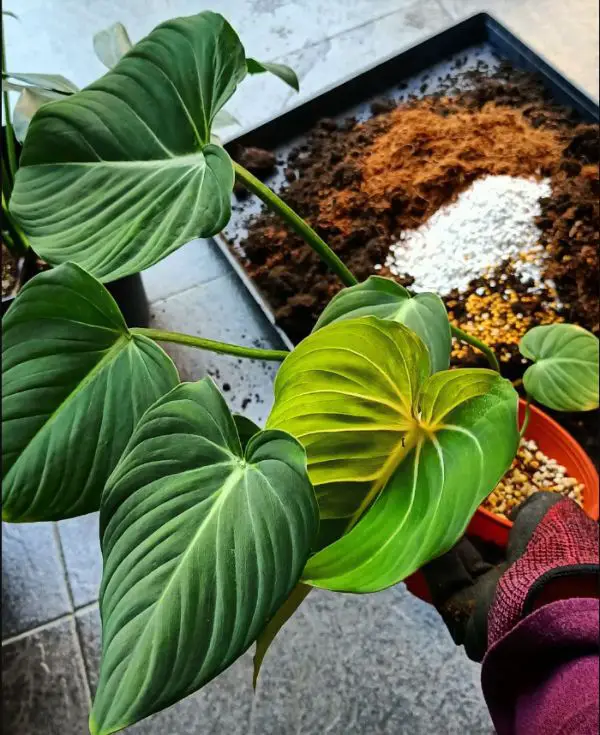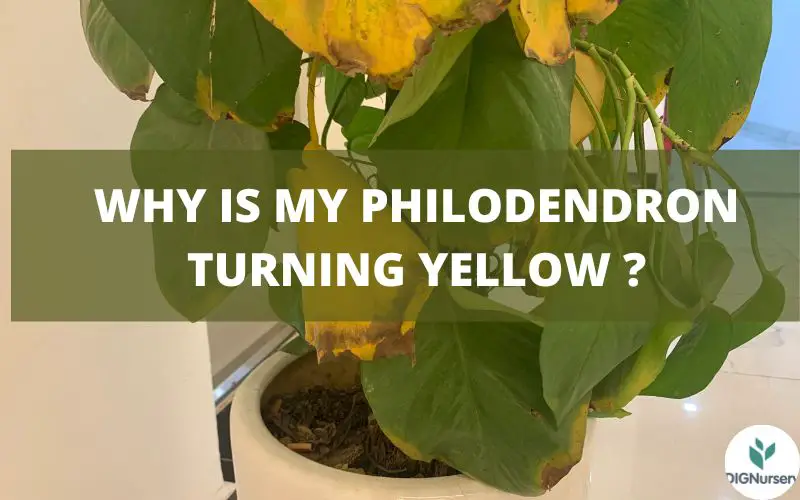It can be frustrating when you have put large amounts of effort into perfecting your garden, only to have some of the plants turn yellow or brown. One or two sickly plants can ruin the entire image of your garden.
There are a few common causes of this and other ailments for Philodendrons, which can easily be cleared up in a matter of days or weeks. In this blog post, we will discuss the most common causes of yellowing leaves in Philodendrons, as well as solutions for each one.
Why is my Philodendron turning yellow?
The majority of Philodendrons that we grow as indoor plants today are native to the West Indies, North, South, and Central American tropics. They would have been exposed to humid, moist circumstances, but with sufficient drainage, as well as dense tropical forests.
Your plant will produce yellow leaves as a response if the roots are allowed to grow overly moist. If you have been closely monitoring your plants, you will instantly identify this issue and be able to quickly resolve the situation.
Incorrect watering is the main reason why Philodendrons develop yellow leaves. Overwatering or underwatering your plant can both lead to problems.
Causes & Solutions for Philodendron yellow leaves
Overwatering
Philodendrons love to thrive on well-drained soil to swiftly get rid of any extra water, and they only need a comfortable amount of water to do so.
If your plant has been overwatered, you may tell by glancing at its leaves. The soft, pliable leaves of an overwatered philodendron begin to turn yellow as a result of the excessive water’s negative effects on photosynthesis. The plant may also appear weaker with dark blotches and stunted development.
The roots become clogged by too much water, which hinders their ability to absorb oxygen. Additionally, the moist soil offers a favorable habitat for the development of fungi and other microbes.
Solutions:
- Let the soil dry out completely before watering again.
- After watering, make sure the drainage holes are empty of water within 1-2 minutes.
- Winter is the time to cut back on watering because the plant uses less water.
- Establish a watering routine for your Philodendron.
You may also like: Overwatered Philodendron: what you need to know
Underwatering
When Underwatering leaves, the leaf edges will turn brown, become dry, and wrinkle. Additionally, some leaves, especially older, lower foliage, will start to turn yellow and possibly fall off the plant.
Solutions:
- Regularly and deeply water your plant—enough so that water drains from the pot’s bottom.
- In order to allow the plant and soil to slowly absorb water, it may be helpful to soak the pot for 4 –10 minutes.
- Keep an eye on your plants and make sure to check them frequently. Even if you have a timetable, you should water your plant after the soil is checked.

Direct sunlight
Too much direct sun might also result in the yellowing of the foliage.
If your Philodendron is in a spot that gets direct sunlight for more than a few hours a day, the leaves may start to turn yellow.
The soil will quickly dry out. The leaf’s edges will become brown and yellow. This occurs as a result of the leaves drying out and turning brown from exposure to the sun.
In addition to harming the leaves, excessive light can dehydrate the entire plant, leading to additional issues that also contribute to dehydration.
Additionally, your Philodendron’s leaves may become yellow from a lack of light. The plant cannot photosynthesize when there is little light, which causes the leaves to begin to yellow.
Solutions:
- Locate a bright area that receives enough indirect light; your Philodendrons shouldn’t be kept in direct sunlight.
- Move it away from the window if it receives direct sunlight from the window.
- You should move your Philodendron to a brighter location or use artificial lighting if it isn’t receiving enough light.
Root rot
Overwatering and a bad drainage system lead to root rot. Pests and fungi are attracted by root rot. If left untreated, they can impede your plant’s growth, make its leaves wilt, and ultimately kill your plant.
Root rot weakens the entire plant in addition to harming the roots. Without treatment, the leaves turn yellow and deteriorate and they may even drop off the plant.
Digging a small hole to reveal your plant’s roots to root rot is blamed for its suffering. If root rot, they are mushy, soft, dark, or black.
Solutions:
- Check the roots.
- If the roots are soft and brown, the plant needs a new well-draining soil pot.
- The roots in clean water are to be rinsed.
- Brown, black, or squishy roots need to be pruned, and a new pot.
- Fill the pot with a brand-new soil mixture that drains well. Put more dirt in the pot before adding the Philodendron.
- After repotting the Philodendron, you can use some fungicide on the soil and give it some water.

Normal shedding leaves
The Philodendron periodically loses leaves before it can produce new ones, as is the case with most plants.
A plant can only expend so much energy on growth and maintaining aging, damaged leaves deplete vital resources that could be used to produce new leaves.
The likelihood that the yellowing is a normal component of your plant’s growth cycle increases if the majority of the yellowing leaves are towards the lowest tier of foliage and the plant is otherwise flourishing.
Remember that as light levels drop and the plant sheds its leaf in the fall and winter, more leaves are likely to experience this.
Temperature
Temperature fluctuations can lead to falling leaves also. The plants need time to become used to any change in temperature.
In the winter, philodendrons enter a dormant state, and prolonged exposure to cold temperatures will harm them. Through yellow or withered leaves, they will exhibit signals of stress.
The plant may even perish if you ignore these symptoms if the philodendron is at a low temperature for an extended period of time.
Keep your philodendron away from windows that experience extreme winter cold or summer heat.
In order to prevent the leaves from burning when philodendron is near a fireplace to offer warmth during the winter, try to keep the distance at a few inches.
Solutions:
- The ideal temperature range for Philodendrons is between 60 to 80 degrees Fahrenheit, while they may tolerate temperatures that are a little.
- Avoid placing them in areas or too close to any type of central heating.
- Avoid placing them were too many drafts.
Fungal diseases
In Winter, fungus illnesses are more prevalent and spread quickly. Mold, fungal and bacterial leaf spots, etc. are typical fungi that infect indoor plants.
These fungi diseases can cause discoloration, dropping of the leaves, and yellow patches or points on the leaves.
Poor drainage systems, stress, or damp, soggy soil are the main causes of fungus illnesses.
Solutions:
- Pruning the problematic regions is necessary if your Philodendron develops fungal infections.
- Spray your Philodendron with a mixture of 0,5 liter of water and 0,5 tsp of dish soap to use for small trees. Change in accordance with the size of the tree.
- After letting the solution sit on the plant for 5 to 10 minutes, rinse it with normal water.
- Repot your Philodendron if necessary in a container with good drainage and a soil mixture that drains well.
- You get rid of all the fungi and bacteria and make sure to disinfect the pruners.
Pests
Philodendrons susceptible to pest infestations are attacked and harmed by pests like aphids, mealybugs, scales, and spider mites.
Pests thrive in dark, damp locations with moist soil when a plant is overwatered. Pests weaken the plant by removing all of its nutrients.
The effects of leaf damage over time include yellow patches, holes in the leaves, and damaged leaf edges. Your Philodendron may have slowed growth, yellow foliage, and dropping leaves as a result of them.
Solutions:
- Always keep an eye on your plant and look for any potential infestations. The presence of discolored areas on a plant may indicate that it is being attacked by pests.
- Regularly keep a close eye on your plant, you’ll be able to simply get rid of the pests before the infestation gets out of hand.
- If your Philodendron is infested with pests, you should begin treatment right and separate it from other plants.
- Thoroughly wash the plant under running water.
- Employing insecticidal soap or neem oil. All over the plant, spray them. To get rid of all the bugs, repeat this procedure daily for two weeks.
- Use commercial pesticides If the pests still don’t disappear. Be cautious because some insecticides contain dangerous substances.
- The plant must be kept in a room with plenty of natural light and excellent airflow. You might begin by handpicking the pests if they are visible.
Lack of nutrients
A typical reason for yellow leaves is nutritional deficiency. Your Philodendron will begin to exhibit indications of distress, such as yellowing leaves if it is not receiving enough nutrition.
Iron and magnesium deficiencies can lead to chlorosis, which can manifest as yellow leaves. When your soil is old and depleted of nutrients, this typically occurs.
As opposed to too much water, the discoloration is typically paler green, and the leaves themselves do not become spongy.
Solutions:
Use a high-quality fertilizer made specifically for Philodendrons to fertilize your plant on a regular basis.
To offer your plant some beneficial nutrients, report it every 12 to 18 months with new soil, even if it’s not in a larger pot.
The majority of the nutrients for the plants will come from the soil, assuming it is in good condition.
During the growing season, you will need to supplement this with fertilizer, which you should apply around once a month.
As fall comes, you should start cutting back on fertilizing. During the cooler winter months, you should only fertilize once every six to eight weeks. Depending on how quickly your philodendron is growing, fertilize it.

How to prevent yellowing leaves on Philodendrons
- Water regularly and deeply.
- Fertilize regularly.
- Avoid direct sunlight for more than a few hours a day. Move our plant to a more shady area if it is receiving too much sun.
- If the soil has an unpleasant odor, check the Philodendron’s roots.
- Pruning or repotting could cause the roots to become harmed. To provide some respite to the roots, you can prune certain branches and leaves.
- You can water with Epsom salt solution when you repot your Philodendron to lessen the stress.
Conclusions:
While it’s difficult to say for certain why your Philodendron leaves are turning yellow without further examination, we can provide some general causes and solutions.
Most likely, the leaves are yellowing due to overwatering, too much sunlight, root rot, lack of nutrients, or normal shedding leaves. You can prevent leaf yellowing by watering correctly, providing the plant with enough light but not too much sun, fertilizing regularly according to package directions, and keeping the plant in an area where the temperature is moderate.


